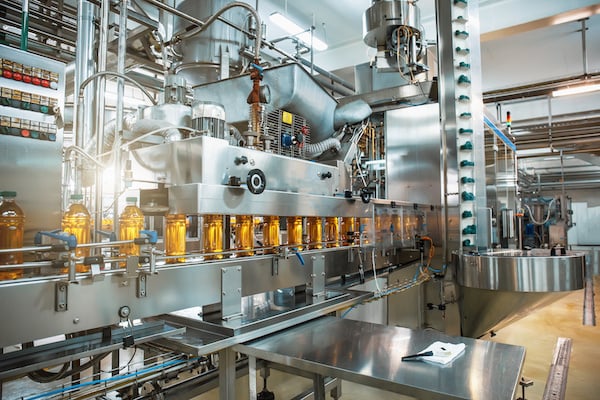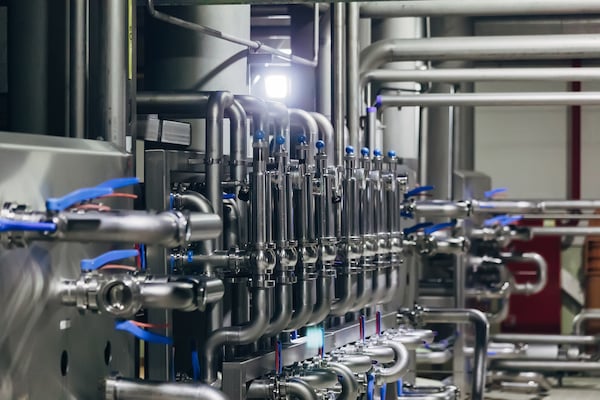Among the many articles regarding the food shortage in the UK, on 22 February The Guardian was a bit more sober in reporting: What is behind the shortages? Certain fresh vegetables and fruits are hard to come by in the UK as a result of an unfortunate combination of poor weather reducing the harvest in Europe and north Africa, as well lower supplies from UK and Dutch producers hit by the jump in energy bills to heat glasshouses. There’s been a lot of mudslinging about who is to blame, but it really comes down to the poor weather and energy costs.
And as reported by the BBC, the shortages are only expected to last "a few weeks" until the UK growing season begins and supermarkets find alternative sources of supply, according to the BRC (British Retail Consortium).
Regardless of what caused the shortage, of the many spokes in the wheel of the food supply chain a couple of the most crucial -- but unnoticed -- are hydraulics and pneumatics. From hydraulic components on farm equipment to pneumatic systems for packaging food product, we couldn’t farm, process, package and deliver our food as quickly, cleanly and efficiently without hydraulic and pneumatic systems.
To the general public, hydraulic systems are typically associated with heavy agricultural and construction equipment or industrial machinery and are not commonly related with food and beverage or pharmaceuticals, where extreme cleanliness and precision are required.
Hydraulic systems create fluid power by using a pump to push hydraulic fluid through the system to cause a cylinder or other component to make something move.
Pneumatic systems are typically found in machine automation using compressed air to move an actuator, operate a clamp or rotate a machine component.
How do these Manufacturing Methods Help in Food Production?
Hydraulic and pneumatic systems play a vital role in the food and beverage industry. They help operate an extensive range of functions, from food preparation, processing, and packaging operations such as forming, filling, and sealing food product, as well as loading for distribution. They operate actuators in production lines that align dispensers for filling bottles and cans, are used to open and close oven doors and are even employed in the cleaning and sanitation processes. In addition, hydraulic cylinders and motors are capable of generating significant torque to operate mixers and blenders in food and beverage processing. 
There are many applications for hydraulics and pneumatics in the food and beverage industry, including:
- Blow-molding and handling of food packaging
- Conveyance systems for sorting and distributing products to various plant destinations
- Cutting, slicing, dicing, and chopping systems
- Dispensers for ingredients in solid foods and liquids
- Forming food products into shapes
- Forklifts that transport raw ingredients and finished products
- Large blenders and mixers
- Sealing bottles and cans
Hydraulic and pneumatic systems and components are used throughout food, beverage and pharmaceutical plants for preparation, processing and packaging. Hydraulic motors and cylinders, along with pneumatic cylinders provide torque, force, rotation and displacement to system mechanisms.
Components
Hoses used in food processing often come into contact with food products and cannot include any materials that can migrate into the food. The inside diameter material of food hose is high purity plastic and rubber which comply with European Union and FDA regulations that require:
- Materials which are approved for contact with food.
- Meeting allowable content and migration values of additives.
- Meeting quantity standards for hose components to ensure leak prevention of material that can act or appear like particular types of food.
- Appropriate markings or symbols for food grade identification, often a symbol of a fork for food material hose or a glass for beverage.
Hydraulic and pneumatic fittings must also meet strict standards for use in sanitary and sterile environments in food and beverage processing facilities. Extreme temperatures, highly corrosive environments and submersible conditions are all common in food processing. Many fitting materials, particularly for hydraulics, must withstand high and low temperatures and corrosive environments. That’s why stainless steel is the most widely used for food grade hydraulic fittings. In addition, hydraulic lined fittings have an integral lining made of polymers designed for food processing application where cleanliness of the media is critical.
When it comes to pneumatic cylinders for food and beverage, stainless steel can be very expensive. However, there are alternatives to stainless steel cylinders for food and beverage processing where the cylinder barrels and end covers are anodized aluminium and are actuated by stainless steel piston rods. Yet piston components such as bearings are made of polyoxymethylene, a high stiffness thermoplastic material, with low friction properties and outstanding dimensional stability, and is considered a food safe material.
Pneumatic systems are powered by air and provide clean operation where food is present or in other antiseptic environments. This makes pneumatics ideal for food and pharmaceutical industries. Performance characteristics of many pneumatic cylinders are designed for environments from -40° to 150°C. These high-performance cylinders may require special lubricants and sealing materials that will withstand these temperatures and be safe for use in food production. Pneumatic cylinders and associated equipment that minimize entrapment of bacteria for these applications require specific certifications. For instance, the European CEN 'C' standards for food machinery safety provide the safety design and hygiene requirements for food processing machinery.
The Industrial Internet of Things (IIoT) in Food Processing
Pneumatics have become even more effective in the industry with the advent of the Industrial Internet of Things. Energy consumption can be monitored and controlled more effectively, and it has allowed for safer operation of processing equipment and improved predictive maintenance in a closed loop system.
Pneumatic equipment can have IIoT connectivity that utilize sensors for measuring and operating key functions, such as:
- Cycle times
- Flow rates
- Pressures
- Temperatures
- Valve response rates
These sensors signal the operation of preset pneumatically controlled scales with capacities that exceed 340kg to precisely measure food ingredients in processing and final product for packaging. IIoT connectivity provides accurate data on the condition of valves, actuators, filters and other components.
In addition, over the past decade food traceability has become such a major issue in food processing that many are leveraging the IIoT to track the origin of ingredients.

Smart Fluid Hydraulics
Though hydraulic and pneumatic equipment play an integral role in today’s food and beverage industry, due to their often high energy consumption smart fluid hydraulics is leading a revolution in fluid power. Smart hydraulic pumps have the potential to help many companies in process industries optimize energy efficiency and reduce emissions, two major milestones in the industry. These gains in energy efficiency will also have a positive impact on productivity through increased uptime. Higher up-front investment costs in smart fluid hydraulics will be more than offset over time by lower operating expenses. And smart fluid hydraulics should provide a significant ROI for food and beverage and many other industries.
Sources Include:
